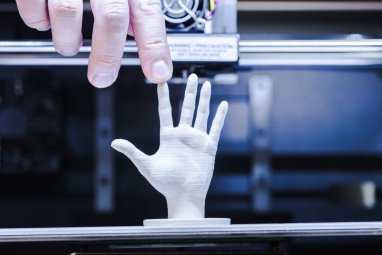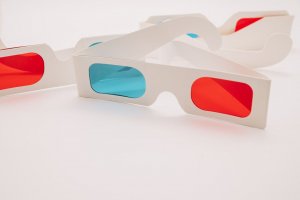Each of us has seen an ordinary office printer and knows that its purpose is to print computer files on paper. Almost everyone has heard about a 3D printer, but still few people know what it is and how it works.
To put it simply, a 3D printer is capable of “printing”, or rather, creating almost any three-dimensional object - a mechanism part, part of a skeleton, a titanium implant or prosthesis, a gas turbine element, ceramic dishes, models of houses, and entire microdistricts, toys, a small figurine in baroque style, shoes and much more. There are even 3D printers that can build a small house in 20 hours.
Aviation, mechanical engineering and the space industry are also actively exploring the possibilities of 3D printers: Elon Musk's company recently tested and plans to launch a spacecraft into space, some parts of which are also printed on a 3D printer. In the United States, elements of the fuselage skin of military aircraft are made on it in a few hours. Thus, we can say that the possibilities of a 3D printer are almost limitless.
In order for a 3D printer to be able to create something out of nothing, it needs a digital 3D model of what it is about to print. To make it easier for the printer to print, the digital model is divided into cross sections, the thickness of which corresponds to the thickness of one printed layer. A digital model or 3D drawing is created on a computer using a special program, then the file is saved in STL format. Parameters are set, such as the density of the future product, after which the 3D printer starts creating the object according to the 3D model provided to it.
Products made of plastic or photopolymers on a 3D printer are printed as follows: layers of material are superimposed on each other in layers until a planned model is obtained. In addition to photopolymers and plastic, metal powder and metal clay are also used to create things on a 3D printer.
The 3D printer itself, which is, in fact, a conventional machine tool with program control, consists of several parts:
- an extruder (print head), which heats the material to the desired viscosity, measures the right amount and squeezes out the material, which comes out in the form of a thin thread;
- desktop, on which a new object is born;
- linear and stepper motor, which set in motion the parts responsible for the printout;
- a lock that limits moving parts.
The material is extruded from the extruder in the form of a thin thread with a diameter of 50 to 300 microns (human hair has a thickness of 80 - 100 microns). The thinner the filament, the more uniform the finished model looks, although the surface of most 3D printed objects looks a little ribbed, rough. This disadvantage is then eliminated by conventional polishing.
Unlike a conventional office printer, a 3D printer creates objects not in a few seconds, but in a few hours or even days, depending on the size.
The possibilities and scope of 3D printers will expand. In the future, they may replace looms and sewing machines, creating clothes, and even cooks, “printing” dishes of any cuisine.
Resources: zoom.cnews.ru; gb.ru; vektorus.ru; gagadget.com













